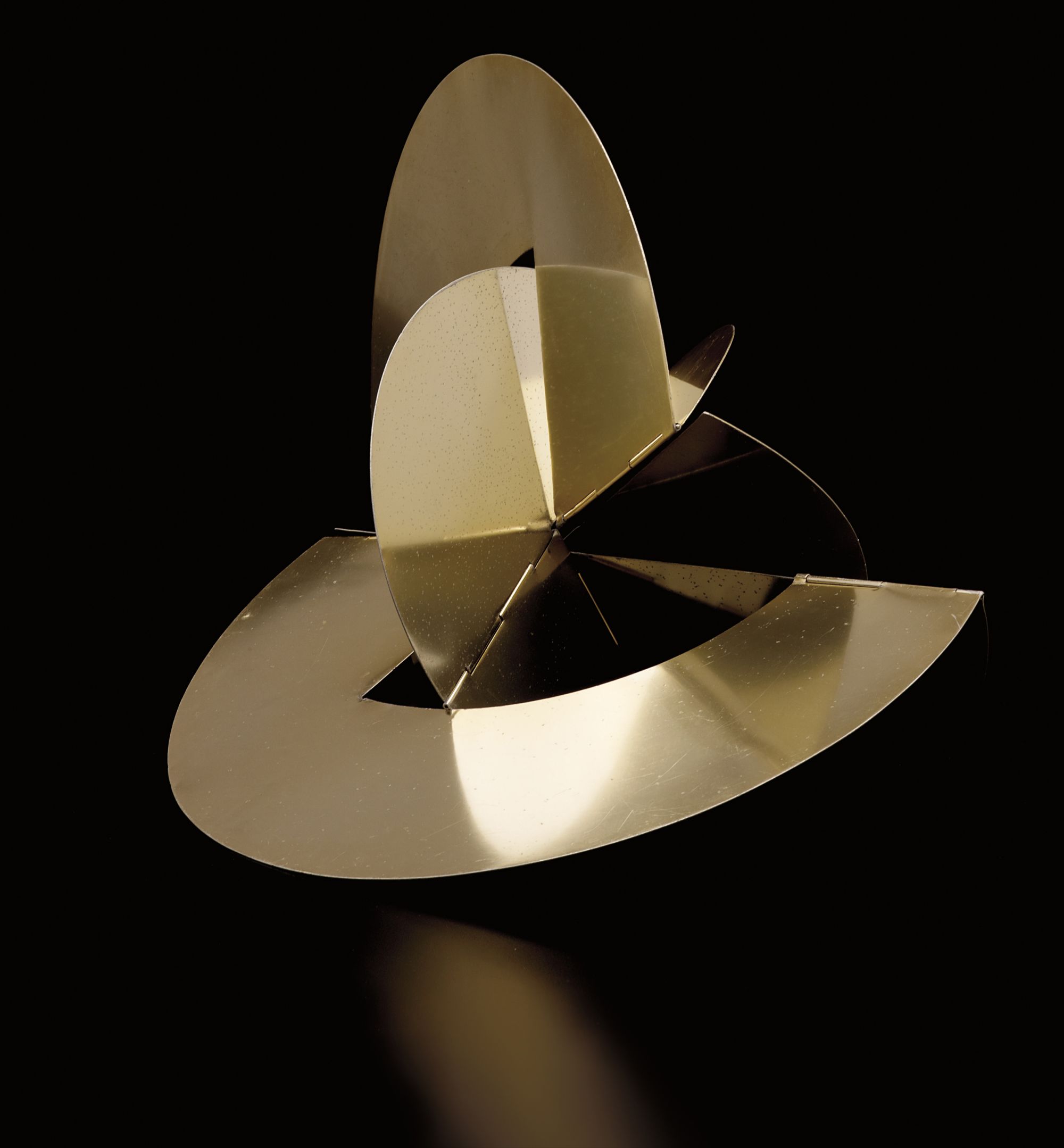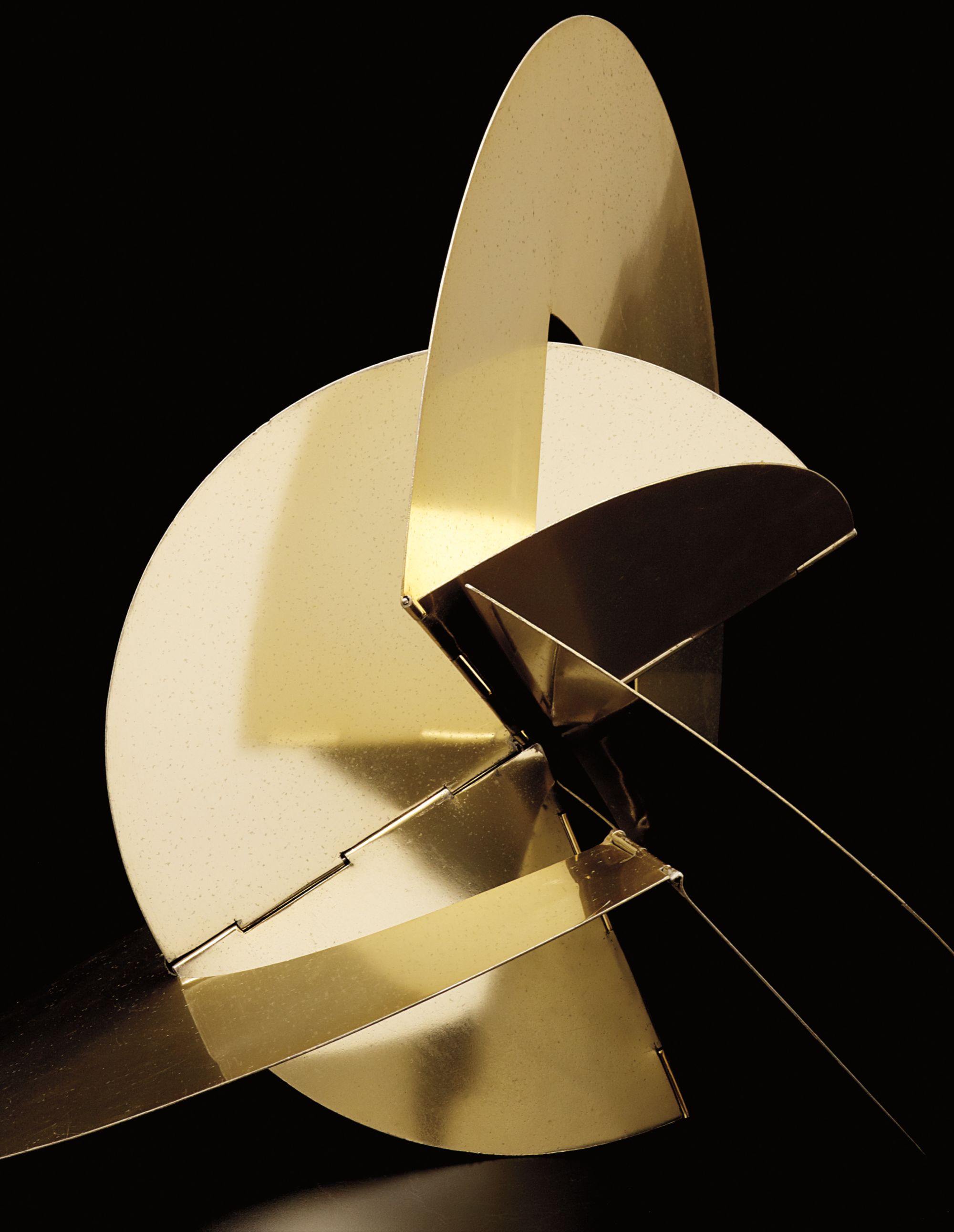







14
Lygia Clark
Bicho parafuso sem fim
Dimensions vary according to configuration.
Full-Cataloguing
The title of the exhibition refers to the idea of breaking the limits of what might have then been acceptable to define as “art”. Lygia Clark’s “radical leap”, as art critic Guy Brett described it, had not occurred, as one could suspect, out of an absolute rupture from her previous practice. In fact, it developed through a gradual and coherent process of accumulative “steps” in which the Bichos could be considered as perhaps the most significant stage within the overall transition.
While her career as an artist was initiated firmly within the field of painting, her progression through the abstract geometric or Neo-Constructivist tendencies, which were so influential within Latin America during the course of the 1950s, took her to question the relationship between the work and its frame, gradually incorporating the latter within the former. Having bridged the borderline established by the frame, Clark focused her attention on the dividing lines within the composition itself. Her work also rejected any association with the “craft” of painting—the individual brushstroke— preferring instead to construct the “picture” out of separate panels, themselves painted “industrially” through the prior application of spray-paint.
The series of works entitled Superfícies Moduladas brought with them the interest in the line that divided one panel from the other: a negative space which emerged from the gap between each panel. This “gap” she entitled “the organic line” since in her opinion it was the key to the perceptual possibilities offered by the overall disposition. A subsequent series of works, the Contra Relevos, displaced the panels away from the single plane of the painting, bringing the work out into three-dimensional space. The Bichos are therefore the logical consequence of this progression. Their innovative characteristic is that the panels are not only linked by an organic line but, since this line is now articulated, it determines the diverse possibilities of the work’s disposition in space through the manipulation of the spectator. For Clark, the process of asserting an ever increasing importance to this line led the work to offer a more profound relationship with the spectator, one which shifted from a purely perceptive to a participatory character.
The significance that such a transition represented for the artist herself is suggested by the very name she ascribed this new series of works. While her denomination for previous series related to the structures and objects of art— such as reliefs, surfaces and so forth— the Bicho referred directly to the organic world, being the colloquial Portuguese term for “animal”, “insect” or more generally “beast”. Clark further associated the hinge, itself evolved from her notion of the “organic line”, with a spinal cord that, as in the case of animals themselves, allows for both movement and its restriction. This association emerged from the realization that despite having determined the constitutive parts of each Bicho, its eventual articulation would always appear to Clark as a surprise, as if the object had a will of its own.
Clark claimed that: “Each Bicho is an organic entity which is totally revealed within the inner time of expression. It has affinities with the mollusc and the shell. It is a living organism, an essentially active work. Between you and it there is the establishing of a total, essential interaction. In the relationship established between you and the Bicho there is no passiveness, neither yours nor its.” Clark goes as far as to suggest that: “In fact there is a dialogue in which the Bicho has very well defined answers of its own for the spectator’s stimuli.”
The individual Bichos were often given their own subtitles, such as in the present lot Bicho parafuso sem fim (Endless Thread) which, one can only assume, emerged from the specific characteristics of the movement this particular “specimen” allows. Bicho parafuso sem fim is, in fact, unusual. Given its early date, 1960, it belongs to the very first examples of Bichos. Its anodized golden color sets it apart from the majority of other works in the series, and another of its most prominent characteristics is the presence of articulated panels within panels. Art historians may speculate here whether these cut-out elements might provide a means of comparison between Clark’s early Bichos and the sculptural work of her fellow Neo-Concrete colleagues, Franz Weissmann and Amílcar de Castro, whose work explored the formal and spatial possibilities of the fold and the cut.
Such a comparison however would require a fundamental revision of the historiography of the movement itself. In the mid-1970s art historian Ronaldo Brito concluded that the Neo-Concrete movement, within which Lygia Clark was a leading figure, represented the peak and rupture of the constructivist genealogy in Brazil. Brito saw these strands as two independent and somewhat antagonistic forces within the art movement and associated individual artists with each strand. Clark, together with Hélio Oiticica, Lygia Pape, and one could add perhaps Ferreira Gullar himself (not so much as the spokesman for Neo-Concrete group, but in his role as a Neo-Concrete poet), were positioned within the disruptive strand, while Weissmann and Castro were classified within the other. For Brito, the disruptive strand took the Neo-Concrete tenets to their extreme logic, arriving at the questioning of art itself.
In the case of Lygia Clark, the reciprocity that emerged with the Bicho between viewer and object was fundamental for the direction her work would take over the course of the following decades. Subsequent to the Bicho, Clark would opt for ephemeral materials which by their own nature would place far more importance on the relation established with the “participator” than the object itself, leading to her more recent association with the idea of dematerialization of art brought by Conceptualism. Clark on the other hand, came to consider this “relation” to have evolved into something closer to therapy than art, a fact that the organizers of her current retrospective at the Museum of Modern Art in New York have chosen to emphasize, paraphrasing her words as a process of “abandonment of art”.
Lygia Clark
Brazilian | B. 1920 D. 1988Lygia Clark was a Brazilian artist associated with the Constructivist and Tropicalia movements. During the 1950s she was primarily known for her paintings and sculptures, but during the 1960s and 1970s she began to explore the idea of sensory perception. Along with other Brazilian artists including Helio Oiticica, she co-founded the Neo-Concrete movement based on the principle that art should be subjective and organic, liable to manipulation by the spectator. She sought new ways to engage the viewer ('the participant') with her work, which became increasingly abstract and holistic. Clark's focus on healing and art therapy redefined the relationship between art and the public, and has become a seminal point of reference for contemporary artists addressing the limitations of conventional art forms.